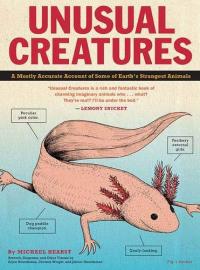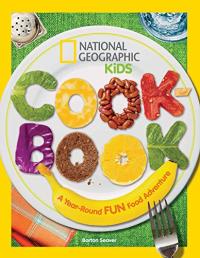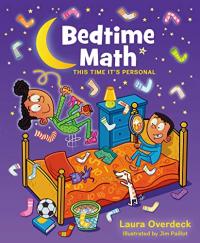
In an attractive, sturdy package, readers are invited to learn about the history of sculpture and several prominent sculptors (such as Rodin and Duchamp). Then readers are invited to create their own cardboard structures, called “a maquette — a French word for a small study of the sculpture…” Ready-to-punch-out pieces and instructions are included.
You Call That Art?!

Really peculiar critters (in which the author includes himself) make for an engaging and informative book. Each double page spread introduces unique but real animals and insects from around the globe. Included with the informal text are scientific names, distribution and detailed drawings of each creature.
Unusual Creatures: A Mostly Accurate Account of Some of Earth’s Strangest Animals

Sophisticated readers who have enjoyed books by two-time Newbery Medalist Katherine Paterson, can learn about the author’s life and the backstory for her novels. Black and white photographs open each chapter. The book concludes with the death of her beloved husband, John. Though often sophisticated, the stories may inspire rereading and the sharing of family stories.
Stories of My Life

Meet the Mikes, both of whom grew up to study oceans, energy, and more. The science comes into focus as readers explore with the actual scientists working in the field and share their discoveries. For those interested in land-based issues, Beetle Busters: A Rogue Insect and the People Who Track It (opens in a new window) (Houghton) explores a voracious creature and its impact on the environment with an equally engaging personal perspective.
The Next Wave: The Quest to Harness the Power of the Ocean

Foodies and cooking aficionados as well as those only marginally interested in food are sure to find something to enjoy in this handsomely formatted and enriching look at food. Recipes range from easy to more complex and are placed amid information and activities for the entire year.
National Geographic Cookbook: A Year-Round Fun Food Adventure

An unnamed narrator dreams he has visited the studio of artist Henri Matisse where he meets the artist himself. Matisse’s words and mixed media illustration are used to explore Matisse’s paper cutouts briefly but effectively. Color, line and language introduce not only an artist but are sure to inspire further exploration.
Meet Matisse

Everyone makes mistakes — even well-known people — which is why this collection of humorous and often insightful biographical sketches begins with a warning: “If you only want to see people at their best, this book isn’t for you…” as it reveals how 14 luminaries made mistakes. Black/white illustrations add humor and spirit.
How They Choked: Failures, Flops, and Flaws of the Awfully Famous

The pioneering homesteading family, which includes the “Little House” books author, moved a great deal and is reflected in Laura’s books. Wilder fans and those interested in American history will be engaged by instructions for a corn husk doll and recipes for Johnnycakes, gingerbread and butter as well as the family’s story.
Little Author in the Big Woods: A Biography of Laura Ingalls Wilder

Some fly, others only walk but regardless of where they live or what they eat, the parrots presented are fascinating. They are pictured in handsome, realistic illustrations and a brief text. Further information about each parrot appears at the end, along with a glossary and additional resources, making this a book that can be enjoyed by many.
About Parrots: A Guide for Children

The early years of a girl who grows into a writer has been recreated from family stories combined with memory and presented in verse. Born in February 1963 in Ohio, Woodson’s family soon moves to the South during turbulent years. The history of the writer, her family and a nation combine in rich, metaphorical language.
Brown Girl Dreaming

Renowned children’s literature authority Leonard S. Marcus speaks with their creators and others — twenty-one of the world’s most celebrated authors and illustrators — and asks about their childhood, their inspiration, their determination, their mentors, their creative choices, and more. Amplifying these richly entertaining and thought-provoking conversations are eighty-eight full-color plates revealing each illustrator’s artistic process from sketch to near-final artwork in fascinating, behind-the-scenes detail.
Show Me a Story! Why Picture Books Matter: Conversations with 21 of the World’s Most Celebrated Illustrators

“A picture book is a dialogue between two worlds: the world of images and the world of words,” says Marcus in this lively inside look at the creative work of 14 children’s book writers and illustrators. Maurice Sendak, Rosemary Wells, Robert McCloskey, Charlotte Zolotow, James Marshall are among those who are interviewed.
Ways of Telling: Fourteen Interviews With the Masters of the Art of the Picture Book

Marcus presents in-depth interviews with 13 renowned fantasy writers, including Susan Cooper, Nancy Farmer, Brian Jacques, Tamora Pierce, and Philip Pullman. Marcus unearths some common threads (many were inspired early on by J.R.R. Tolkien, for example) and elicits advice to aspiring writers. From Ursula Le Guin: “Read. Write. Read. Write. Go on reading. Go on writing,”
The Wand in the Word: Conversations with Writers of Fantasy

Everything one needs to know about triangles and angles is presented in a brief but informative and upbeat manner, all colorfully illustrated. A few triangle experiments are clearly delineated and illustrated and sure to engage and may lead to other activities.
Triangles

Walter, Wendell, Woody, and Wilmer Wing Wing, feathered siblings, share comic adventures beginning with their first amazing feat, “Describing Relative Positions” (in front, behind, etc.). They continue by composing simple shapes, and conclude by partitioning a rectangle into equal parts. While wacky, the Wing Wings’s exploits enliven basic math concepts and vocabulary.
Wing Wing Brothers Geometry Palooza

Raised shapes correspond with die-cuts on sturdy board to present objects and numbers from 1 to 10. Bright colors and broad shapes use limited language to proffer foundational math concepts while providing different ways to perceive them. The same approach is used in Shapes (opens in a new window), another offering in this attractive series.
Numbers

When ten mice start their day, they engage in routine activities — always equaling 10. Lively verbiage and numerical equations combine with animated illustrations to present the rodents’ antics (e.g., “10 mice wake.9 mice tidy. 1 mouse somersaults. 9+1=10”).
Mice Mischief: Math Facts in Action

Transformations begin with one (1) acorn that becomes one oak tree with a turn of the sturdy page. They continue on to 100 puzzle pieces that, when put together, become one big puzzle. Boldly colors and die cuts create an effective and intriguing introduction to counting from 1 to 100.
Countablock

Playful situations from familiar situations and activities make math come alive. Questions for “wee ones”, “little” and “big kids” as well as bonuses make this humorously illustrated bedtime book fun at any time of the day. It’s a follow-up to Bedtime Math: A Fun Excuse to Stay Up Late (opens in a new window).
Bedtime Math 2: This Time It’s Personal

The horizontal format of this sturdy board book is just right for images of all manner of flying machine — from a seaplane to a space shuttle. Each deft image is accompanied by a similar refrain, “The helicopter goes,…” followed by onomatopoeic sounds dramatically presented in bold typeface.
Planes Go

Buzz and his pet fly, Fly Guy, are back. Boy and fly visit a fire station to learn more about what firefighters do as well as a bit about fire safety. Comic illustrations of bug-eyed Buzz and Fly Guy combine with actual photographs present information accessibly and with good humor.
Fly Guy Presents Firefighters

Drones — “remotely operated vehicles” — have changed the military and now may even change the way packages are delivered. Full color photographs and illustrations and brief text introduce a large number of different drones and their uses.
Drones: From Insect Spy Drones to Bomber Drones

A spunky look at zoos from all over the world beginning 4400 years ago in the Sumerian city of Ur and ending at the present day San Diego Zoo. The many places worldwide and zoos’ purposes are presented in informative text and lighthearted cartoon illustrations.
What’s New? The Zoo: A Zippy History of Zoos

Beginning readers will appreciate the easy language and color photographs that describe necessary preparations and what zookeepers then feed animals. Children are shown at a petting zoo and eating a snack themselves in the book’s final images.
